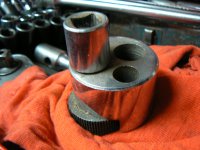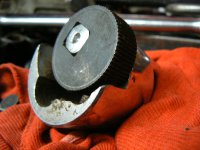You mention supporting the car by the sills on blocks of wood Dave. Like you, I suspect, I'm a bit obsessed with preserving the paint so reducing the propensity for rust to take hold. Here is my take on the wooden block solution:-
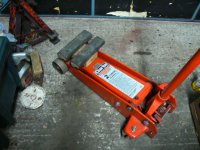
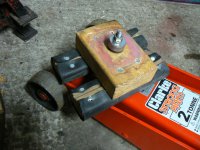
You also mention about the, very common, problem of seized track rod end locking nuts. All my life I've run into this problem and, when I had access to an oxy-acetylene torch, it was usually quite easily solved. When working at home however this option really isn't an option (try mentioning to your house insurer that you've got oxy- acetylene bottles in your garage. the reaction is quite interesting!)
I sometimes resort to my "plumbing" gas torch but the problem with it is the flame is too big and applies heat to too large an area so risking damage to the nylon inserts and rubber gator of the track rod end itself. I have had great success with releasing fluids and, latterly, freezing fluids. My technique is to apply fluid liberally and, supporting the nut on one side with a heavy lump of something (I use an old hammer head) tapping firmly and repeatedly on the other side of the nut. You don't need to hit really hard, you're not trying to deform the nut. The idea is that the vibrations and shock together with the slight compressing effect allows the fluid to penetrate and the rust to loosen it's grip. Here are my favorite weapons:-
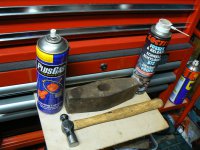
Having "attacked" the nut it's still likely to need some serious "persuasion" to give up. In years gone by, if an open ended spanner wouldn't shift it (and often they will tend to spread the jaws so rounding off the corners of the nut if it's a really tight one) I would have turned to a nice big pair of self locking pliers (see middle tool in the next image) Generally speaking a waste of time on anything really tight though. so then out would come the Stillsons, or Footprint if it's smaller. Boy do they grip but they have two unfortunate problems. 1. they have aggressive teeth so mark up the nut faces which will later rust badly. 2. the harder you heave on them the tighter they will grip which is the whole point and is good in many cases but, for a nut, which does not have a great depth of metal to resist this crushing effect, what tends to happen is it crushes the nut down onto the tie rod so making it grip the tie rod and further resist removal. Not at all what you want! The next image is of a footprint, self locking (Mole to some) and Stillson type wrenches.
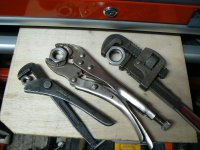
A number of years ago, wandering around B&Q, I came across a display of Stanley tools. (Modern Stanley tools, in my view, are pretty mediocre DIY type quality, with one or two exceptions. Unlike their really old stuff which was pretty good) However I was intrigued by a display multi size spanner "thingys"
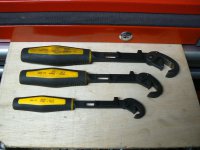
Normally wouldn't even give a second look - but was looking for stuff to keep in the car for emergency use. Looking more closely at them I realized they work like the Stilson/Footprint type. That is the harder you pull on them the tighter they grip the nut. Smooth jawed too, so won't mark the nut faces! but the really big deal is that they grip on £ faces 120 degrees apart. Therefore they won't easily crush the nut!
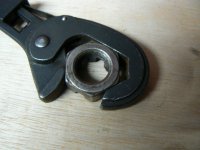
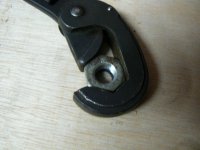
You can see here how that works. The set of three were on special offer. I bought them. I find them very good indeed and I use the largest one all the time on things like the track rod end nuts. They also "ratchet round the nut if you move the handle in the opposite direction to the tightening direction and this can be very useful at times.
Once slackened you will probably find the tie rod threads are heavily corroded if you've had that much problem with the locking nut. The thread inside the track rod end will probably be quite clean though (if you're lucky) so you can often run the nut down towards the end of the tie rod to fully expose the rusted threads. By yourself a thread file (thread chaser) but only a really good one, Quality is everything. I bought Sykes Picavant. You can use them on any size of male thread and I find many uses for mine.
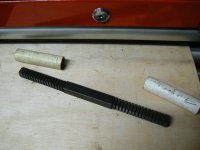

They are very hard and brittle so I protect mine with some short lengths of heavy gauge plastic pipe so they don't suffer damage where they live in the "fitting" drawer of my tool chest.

It's not often I run into something these "friends" and I can't deal with. The only thing about the Stanleys that trouble me is they look a little weak in the middle of the handle, where the slider is. However I have had a short length of pipe on the big fella and he didn't break!
Hope some of this was of interest. Off for an afternoon with our grand daughter now - going swimming again. It'll be "Granny, lets sink Grandad can we?" again. I love it really.

 f:0
f:0


